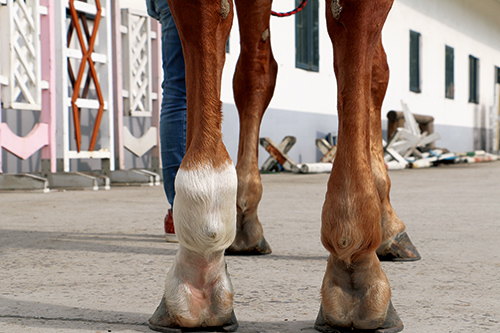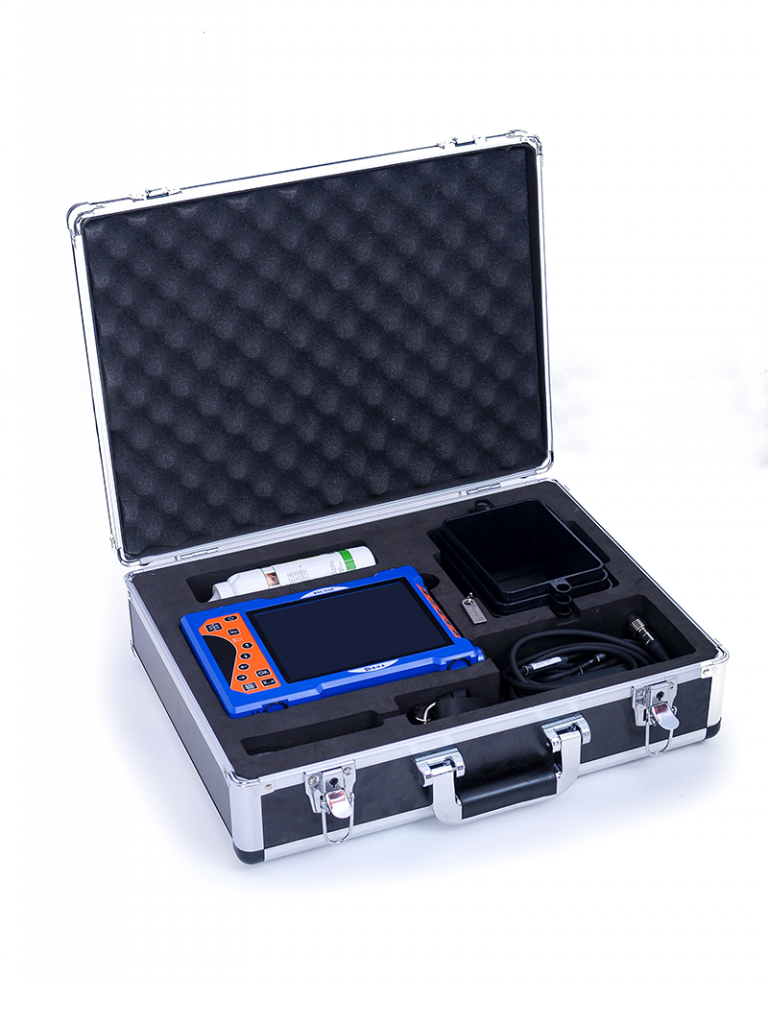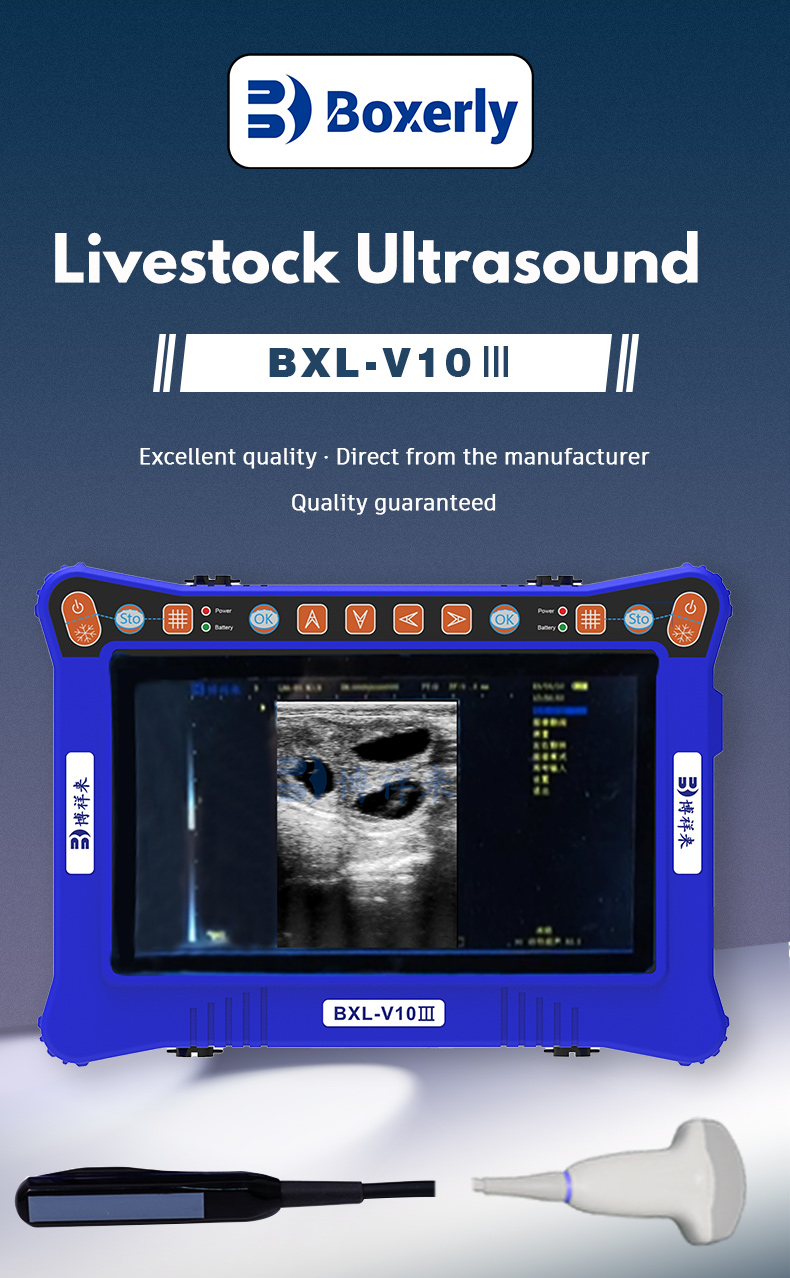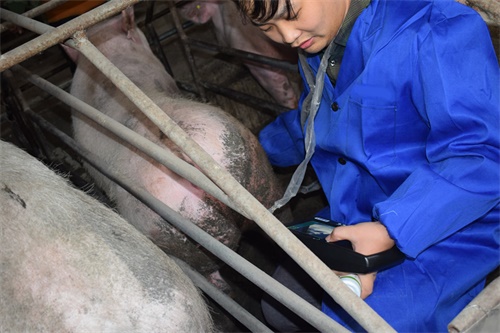Ultrasound Pregnancy Tools Enhancing Biosecurity in Commercial Livestock Operations
In modern commercial livestock production—from cattle to swine, sheep to goats—pregnancy plays a pivotal role in herd management. Knowing which animals are pregnant, how far along they are, and whether those pregnancies are healthy is essential for scheduling nutrition, mating, culling, and facility planning. Traditionally, veterinarians and producers have relied on palpation, physical observation, and occasional blood tests to estimate pregnancy. Today, however, ultrasound provides a precise, non-invasive way to detect pregnancy early, identify fetal viability, estimate gestational age, and spot complications such as twins or fetal death.

Yet beyond its reproductive insights, ultrasound pregnancy tools yield significant biosecurity advantages. By reducing handling, improving grouping and isolation strategies, and optimizing resource allocation, ultrasound contributes to healthier animals, lower disease risk, and more efficient operations. This article delves into how ultrasound pregnancy diagnostics work, explores perspectives from around the globe, and highlights real-world examples of its impact on commercial livestock biosecurity.
1. How Ultrasound Pregnancy Diagnostics Work
Ultrasound uses high-frequency sound waves—typically in the 2.5–5 MHz range for large livestock and higher frequencies for smaller animals. A transducer emits these sound waves, which penetrate tissue and reflect off internal structures; the returning echoes are processed into real-time grayscale images known as B-mode (brightness mode) scans.
Key pregnancy-related discoveries via ultrasound include:
-
Gestational sacs and fetal poles as early as 28–30 days in cows.
-
Heartbeat detection typically by day 28–32.
-
Fetal positioning and viability, including placental attachment.
-
Fetal count (multiples in sheep, goats, swine) by mid-gestation.
-
Fetal age estimation, often accurate within ±7–10 days.
-
Detecting abnormalities, such as fetal death, hydrops, or uterine issues.
Operators can use transrectal ultrasound (in cattle and sheep) or transabdominal scanning (particularly in pigs and cows later in gestation). Equipment ranges from rugged portable units to compact wand-style scanners.
2. Global Perspectives on Ultrasound in Livestock Reproduction
North America
In the U.S. and Canada, ultrasound pregnancy diagnostics have gained traction over the past two decades. According to the Beef Improvement Federation and University extension services, nearly half of cow–calf operations use ultrasound during breeding seasons to confirm pregnancy. In swine, large commercial farms increasingly use ultrasound for early detection, enabling better scheduling of farrowing barns and grouping of sows.
Producers in Canada often cite increased weaning weight and reduced open cows as benefits: scanning identifies open cows early, allowing for rebreeding or sale. It also enables selection of replacement heifers with confirmed pregnancy, improving genetic progress.
Europe
European livestock operations—especially in the U.K., Ireland, France, and the Netherlands—are embracing ultrasound as part of precision livestock farming. In the U.K., organizations like AHDB Beef & Lamb actively promote portable scanners in ewe flocks to manage twin-bearing ewes and optimize feed allocation during gestation. In continental dairy herds, ultrasound helps confirm pregnancy in dairy cows before dry-off, thus shortening the calving interval and reducing open days.
Australia and New Zealand
In Australia, commercial beef and sheep producers have long recognized ultrasound’s value in a harsh environment where feed resources must be carefully rationed. Sheep operations use ultrasound scanning to identify multiples, enabling selective feeding programs. In cattle, scanning helps detect fetal losses early, especially during drought years. Similar strategies are widely used in New Zealand.
Latin America
In countries like Brazil and Argentina—where beef cattle farming is a major industry—ultrasound pregnancy tools are rapidly growing in popularity. Their use is especially valued in large-scale operations and for “bean counters” focused on centimeters of pregnancy. Some estimates suggest widespread programs reach 50%–70% of commercial herds. Local veterinarians are increasingly trained in reproductive ultrasound to help producers improve calving rates and reduce reproductive inefficiency.

3. Enhancing Biosecurity Through Pregnancy Scanning
Direct and indirect biosecurity benefits include:
3.1 Minimizing Animal Handling
Traditional pregnancy checking methods involve frequent physical handling, palpation, or even induction doses—all of which stress animals and elevate the risk of injury or pathogen spread. Portable ultrasound minimizes handling time and improves welfare. When one person can scan 70–100 cows per hour with only brief restraint, the window for disease exposure is significantly reduced.
3.2 Improved Group Management
Early detection enables strategic grouping:
-
Pregnant vs. open animals: Separating open animals allows for targeted rebreeding, culling, or sale.
-
Singleton vs. twin/triplet-bearing ewes: Twin-bearing sheep can be grouped and fed more intensively to reduce lamb loss and improve survival.
-
Abortions and fetal anomalies: Early identification aids in isolation of problem animals, reducing potential spread of infectious agents (e.g., Brucella, Leptospira, Toxoplasma).
By grouping animals based on reproductive status, producers can reduce cross-contamination, especially across facilities like paddocks or barns.
3.3 Optimizing Nutritional Plans
Knowing the exact stage of pregnancy allows for more tailored feeding programs:
-
Phase feeding: Livestock early in pregnancy may require maintenance rations, while late-gestation animals need high-energy diets.
-
Pregnancy loss monitoring: If health declines mid-pregnancy or fetal death occurs, nutritionists can intervene—adjusting rations or supplementing for immune function.
-
Reducing feed waste: Feeding open animals the same ration as pregnant animals is wasteful; scanning avoids this inefficiency.
3.4 Early Detection of Reproductive Failures
Scanning not only confirms pregnancy, but can also detect:
-
Embryonic/fetal death
-
Twin reduction (e.g., one calf resorbed)
-
Poor placental attachment
These reproductive failures can be due to infectious agents or nutritional deficiencies. Prompt detection enables testing, isolation, and targeted interventions—mitigating the risk of larger outbreaks.
4. Workflow Integration into Commercial Systems
Adoption of ultrasound requires thoughtful integration into farm management:
4.1 Timing and Frequency
Common checkpoints:
-
28–35 days post-breeding: earliest accurate pregnancy confirmation.
-
50–60 days: heartbeat and viability check.
-
Mid-gestation (~90 days): fetal sexing (in some species), viability recheck.
-
Late gestation (~120–150 days): fetal count and assessment of multiples.
Some operations use a two-stage scan: early to confirm pregnancy and assign nutritional groups, and later to validate fetal number and viability.
4.2 Equipment Options
Choices include:
-
Portable units: hand-carried devices with battery operation—ideal for grazing herds.
-
Rechargeable scanners: wand-style systems like BXL‑V50 (marketed globally)—compact and user-friendly, perfect for use at the working end without heavy lifting.
-
Cart-based systems: more advanced, high-resolution devices suited to fixed-facility dairy or swine units.
4.3 Personnel Training
Accurate scanning depends on operator skill. Many regions offer short courses (2–3 days), combining theory and hands-on practice. Some universities and private vets offer certification programs. Ongoing mentoring ensures consistent reliability.
4.4 Data Management
Integrating scan results into farm software (e.g., AgriLife, Topfarm) enables trending analysis, reproductive efficiency monitoring, and decision support. Farms can track pregnancy rates, calving intervals, and causes of losses year over year.
5. Case Studies Around the World
U.S. Dairy Operation (Wisconsin)
A 5,000-cow dairy farm in Wisconsin adopted early ultrasound pregnancy detection to reduce open days and improve calving intervals. Over two breeding seasons, the herd’s open rate dropped from 15% to under 8%. With fewer late-calving cows, dry cows were healthier, mastitis rates declined, and labor costs dropped. The switch reduced production costs by USD 40/cow/year.
Australian Sheep Farm (Victoria)
A large sheep property in Victoria used ultrasound to identify twin and triplet-bearing ewes. Multiple-bearing ewes were separated and fed higher-protein diets during late gestation. The result: lamb survival rates improved from 72% to 84%, and overall farm profitability rose by 15%.
Brazilian Beef Ranch (Mato Grosso)
In central Brazil, a beef cattle operation introduced ultrasound scanning to detect early pregnancy and fetal anomalies. Coupled with traceability programs, it improved calving rates from 78% to 86%, despite seasonal drought conditions. The precise grouping and feed allocation helped the farm recover faster from feed shortages.

6. Overcoming Challenges
Cost Considerations
Ultrasound units range from USD 3,000–10,000. However, economic analyses often show break-even within 12–18 months due to improved conception rates, reduced losses, and optimized feed use. Leasing units or hiring professionals can lower the entry cost barrier.
Equipment Care
Sensors and cables demand careful handling. In dusty, humid, or muddy livestock environments, protective cases and routine cleaning with approved disinfectants lengthens equipment life and reduces contamination risk.
Staff Training and Retention
Frequent turnover in field technicians requires ongoing training programs. Some farms tie operator certification to compensation or performance incentives.
Regulatory Compliance
In areas with strict drug withdrawal withdrawal periods or residue monitoring, ultrasound can support compliance by identifying pregnancy stages that affect drug selections and timing. It also aids in record-keeping for audits and certification schemes.
7. The Future of Reproductive Ultrasound in Livestock
Artificial Intelligence Integration
Emerging AI-powered ultrasound systems can automatically measure key structures—gestational sac size, fetal heart rate, and fetal count—with minimal operator input. Trials in Europe and North America have shown similar accuracy to skilled technicians, facilitating rapid deployment and standardization.
Remote Monitoring and Telediagnostics
Wi‑Fi–enabled wireless units enable scanning in the field and remote review by veterinary specialists. This is transformative for small or remote farms lacking resident experts.
Combined Biosecurity Sensors
Future ultrasound probes may integrate additional sensors (e.g., infrared for temperature, multispectral imaging for inflammation) for comprehensive health screening.

8. International Recommendations and Standards
Best practices outlined by organizations such as the World Organisation for Animal Health (WOAH) and national veterinary associations include:
-
Frequent disinfection of ultrasound probes and cables.
-
Verifying unit calibration annually.
-
Documenting scan results in herd records.
-
Maintaining appropriate facilities for animal restraint and quick distance from other groups to minimize disease exposure.
-
Proper disposal of ultrasound gel and single-use covers to prevent environmental contamination.
These guidelines help ensure ultrasound adoption bolsters—not undermines—biosecurity.
Conclusions
In commercial livestock production, precision reproductive management drives profitability, animal welfare, and disease control. Ultrasound pregnancy tools offer critical information early and reliably—data that allows producers to:
-
Identify pregnant versus open animals for targeted management.
-
Detect multiples and allocate feed accordingly.
-
Identify reproductive failures quickly, reducing disease exposure risk.
-
Optimize flush and nutrition programs for better outcomes.
-
Maintain tighter calving schedules and improved feed conversion.
-
Support compliance with health standards and traceability expectations.
By combining ultrasound diagnostics with robust biosecurity practices, producers worldwide are reaping rewards: healthier herds, reduced reproductive losses, improved efficiency, and better margins. As technology progresses—with AI analysis, wireless networking, and integrated health sensing—ultrasound pregnancy diagnostics will become even more central to sustainable, biosecure livestock production.
Adopting what works in one region—be it a high-throughput Canadian beef operation, Australian sheep station, or Brazilian cattle ranch—and adapting it to local conditions is the key to unlocking global benefits. Ultimately, ultrasound is transforming reproductive management from art and instinct to precision science.

References
-
Whitaker, D. A., & Smith, E. (2021). Veterinary Ultrasonography in Food-Producing Animals. Journal of Veterinary Imaging.
-
Beef Improvement Federation. (2023). “Use of Ultrasound for Growth Evaluation in Cattle.” Beef Cattle Institute.
URL: https://www.beefcattleinstitute.org/ultrasound-growth -
World Organisation for Animal Health (WOAH). (2024). “Guidelines on Reproductive Management and Biosecurity.”
URL: https://www.woah.org/fileadmin/Home/eng/Health_standards/tahc/current/chapitre_pregnancy_diagnostics.pdf -
Australian Sheep Genetics & Management Review (2022). “Economic Impacts of Ultrasound Pregnancy Diagnosis in Sheep.”
-
University of Wisconsin–Madison Cooperative Extension (2020). “Reproductive scanning in Dairy and Cow–Calf Herds.”





